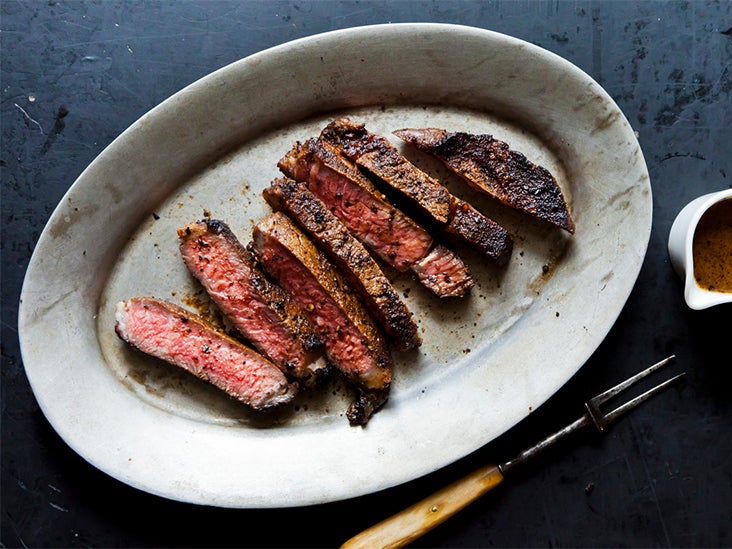By Helen West, RD — Medically reviewed by Amy Richter, RD, Nutrition — Updated on September 18, 2022
The mineral zinc helps maintain your immune system and plays a vital role in many other aspects of your health. Discover great sources of zinc, from meat to dairy to dark chocolate.
The mineral zinc is essential for good health.
It’s required for the functions of over 300 enzymes and is involved in many important processes in your body (1).
It metabolizes nutrients, maintains your immune system, and grows and repairs body tissues.
Your body doesn’t store zinc, so you need to eat enough every day to ensure you’re meeting your daily requirements.
Men 19 years and older should aim for 11 milligrams (mg) of zinc daily, while women in this age group need 8 mg. If you’re pregnant, you’ll need 11 mg per day. If you’re breastfeeding or chestfeeding, you’ll need 12 mg (2).
Some people are at risk of zinc deficiency, including (2, 3):
- children
- older adults
- pregnant people
- people who are breastfeeding or chestfeeding
A nutrient-dense, balanced diet that includes zinc-rich foods should satisfy most people’s needs.
Here are 10 of the best sources of zinc.
1. Meat
Meat is an excellent source of zinc.
Red meat is a particularly great source, but ample amounts are found in all kinds of meat, including beef, lamb, and pork.
In fact, a 100-gram (3.5-ounce) serving of raw ground beef contains 4.79 mg of zinc, which is 43.5% of the Daily Value (DV) for men and 59.9% of the DV for women (4).
One serving also provides 176 calories, 20 grams of protein, and 10 grams of fat. Plus, it’s a great source of many other important nutrients, like iron, B vitamins, and creatine (4).
It’s worth noting that eating large amounts of red meat, especially processed meat, has been linked to an increased risk of heart disease and some cancers (5, 6).
However, if you keep your intake of processed meats to a minimum and consume unprocessed red meats as part of a diet rich in fruits, vegetables, and fiber, this probably isn’t something you need to worry about.
2. Shellfish
Shellfish are healthy, low calorie sources of zinc.
Oysters contain particularly high amounts, with six medium oysters providing 33 mg, or 300% of the DV for men and 412.5% of the DV for women (7).
Other types of shellfish contain less zinc than oysters but are still good sources.
Alaska king crab contains 7.62 mg per 100 grams (3.5 oz.), which is 69.3% of the DV for men and 95.3% of the DV for women (8).
Smaller shellfish like shrimp and mussels are also good sources. Both contain nearly 15% of the DV for men and around 20% of the DV for women in a 100-gram (3.5-oz) serving (9, 10).
If you’re pregnant, thoroughly cook shellfish before eating it to minimize your risk of food poisoning.
3. Legumes
Legumes like chickpeas, lentils, and beans all contain substantial amounts of zinc.
In fact, 100 grams (3.5 oz) of cooked lentils contain 11.5% of the DV for men and 15.9% of the DV for women (11).
However, legumes also contain phytates. These antinutrients inhibit the absorption of zinc and other minerals, which means zinc from legumes isn’t as well absorbed as zinc from animal products (12).
Despite this, legumes can be an important source of zinc for people following vegan or vegetarian diets. They are also an excellent source of protein and fiber that you can easily add to soups, stews, and salads.
Heating, sprouting, soaking, or fermenting legumes and other plant sources of zinc can increase the mineral’s bioavailability (13).











